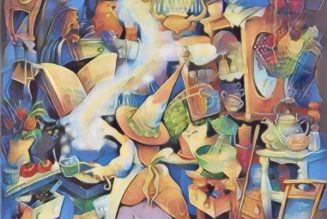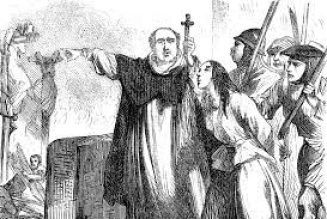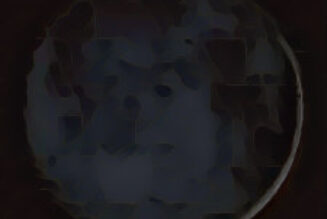The cimaruta, or cima di ruta, is an unusual and beautiful amulet, pertaining to Italian witch lore.
A fine example of the cimaruta is reproduced as an illustration in this book.
The name of this amulet means ‘a sprig of rue’.
The herb rue (Rut a graveolens) is sometimes called Herb of Grace ; and rue and vervain are supposed to be the two plants most pleasing to the goddess Diana, the queen of Italian witches.
The cimaruta must be made of silver, because that is Diana’s metal.
As well as the representation of the sprig of rue, it also contains the five-petalled flower of vervain, the waning moon to banish evil, the key which is the attribute of Hecate, and a fish, which is a phallic symbol.
Fairly common in the nineteenth century, the cimaruta is not so well known in modern Italy.
At least, the writer has shown this example of it to Italians, and they did not know what it was ; though perhaps they did not care to identify it, on account of its association with witchcraft, ‘La Vecchio Religione’, or the ‘Old Religion’.
The purpose of the cimaruta is to show oneself a votary of the witch goddess, by wearing her favourite herbs; and in general, to bring good luck and ward off evil.
It also protects against the much-dreaded malocchio, or power of the Evil Eye, a matter which is seldom discussed, but still strongly believed in.






















